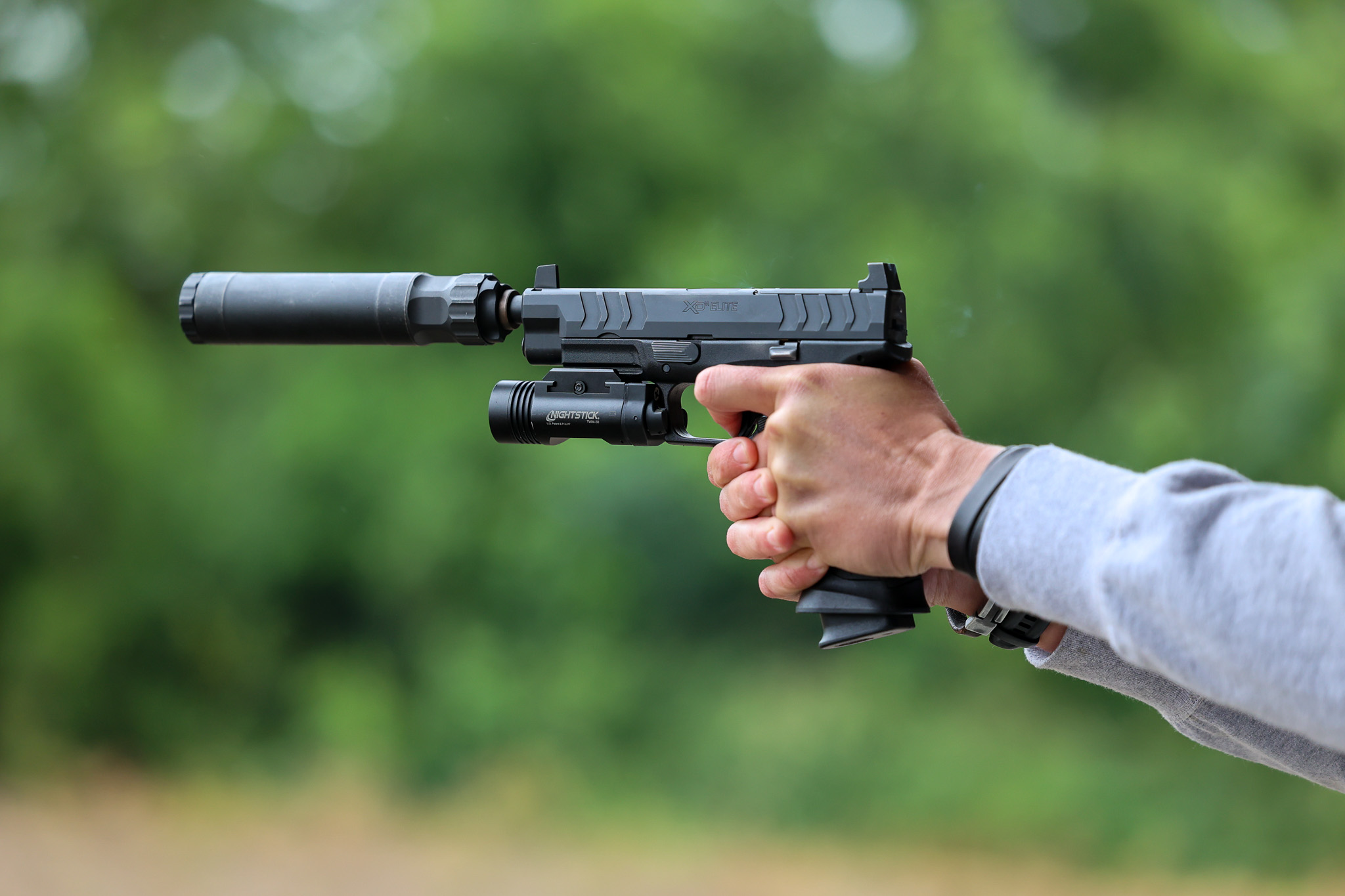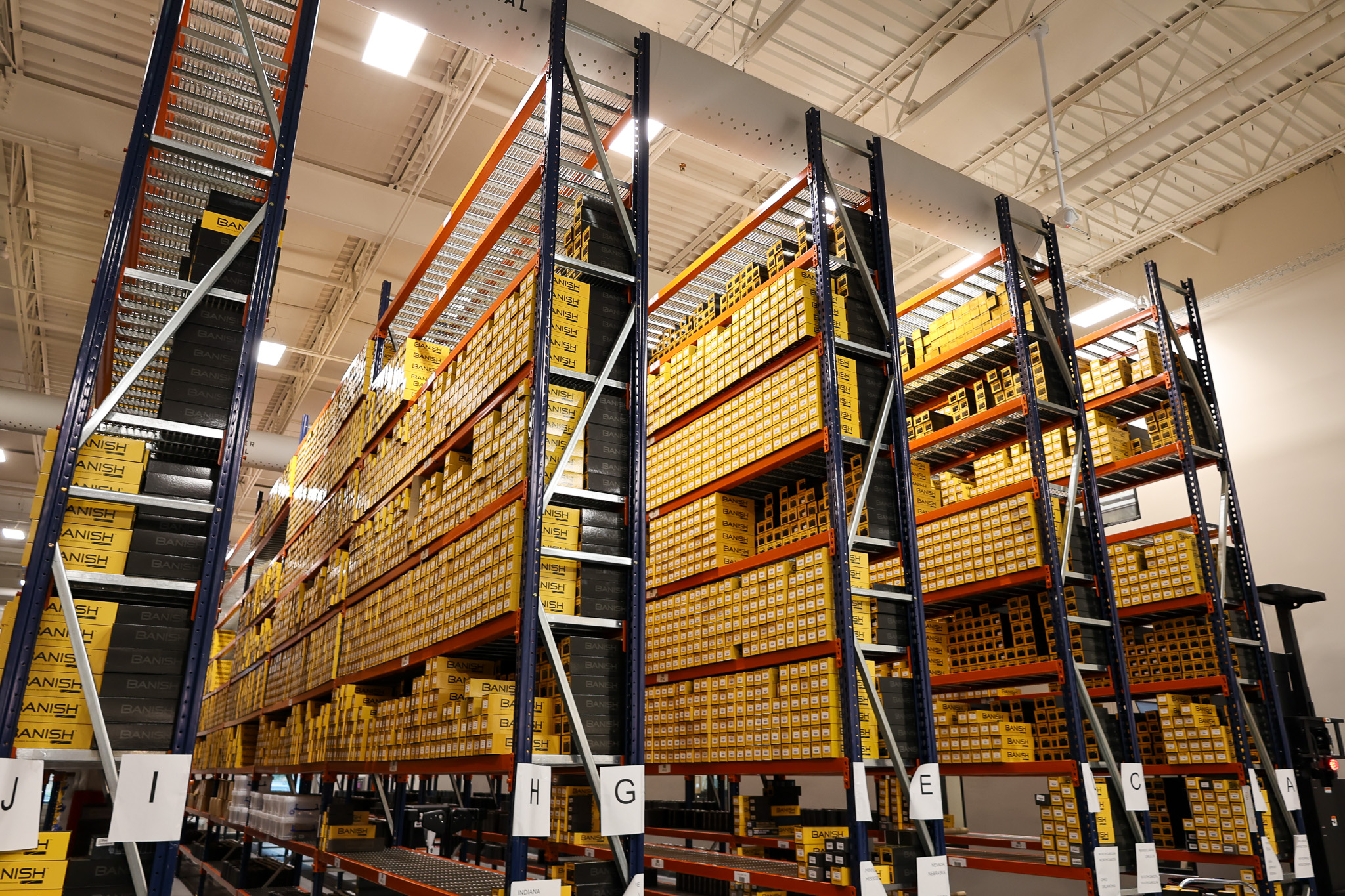During their daily staff reports in March, employees at Silencer Central headquarters noticed something very strange.
New customer orders looked normal. Suppressor shipments were on track. But the customers whose applications had been approved by the ATF? Those had skyrocketed.
“We started getting quick approvals. Uncharacteristically quick,” says Brandon Maddox, founder and CEO of Silencer Central. “I’m always listening to that morning update for how many [ATF applications] we’re getting approved. Maybe a hundred, two hundred, three hundred, whatever. Then one day it’s like a thousand. Then the next day it’s like two thousand. And I’m like, ‘Man, what is going on here?’”
As one of its many requirements to apply for lawful ownership of a suppressor, the Bureau of Alcohol, Firearms, and Tobacco requires customers to fill out a Form 4. Historically, the wait time between submission and approval for qualified individuals has been up to 10 months. Now, according to the ATF’s current processing times, that number is down to 33 days for individuals who apply online. Maddox says it’s actually even faster, with Silencer Central tracking an average approval time of 4.6 days last month for its customers, with many receiving same-day approvals. Silencer Shop is also quoting much faster approval times than the ATF, with a current median wait time of five days for individuals who e-file their Form 4.
Maddox has built Silencer Central’s entire business model around helping customers understand and navigate the ATF’s regulation of suppressors, and he was certain no law had changed. So how had the agency slashed wait times without cutting a single requirement? As Maddox put it, it was almost like “they’d outsourced this to aliens.” The reality is much more mundane: The ATF reduced paperwork and now sends background checks to the FBI in batches. Interestingly, the current slump in firearms sales has also helped approval times.
ATF’s Suppressor Processing Times, Then and Now
Photo by Natalie Krebs
While the ATF has fielded complaints for years over maddening wait times, the agency has been relatively quiet about its streamlined process. Instead of issuing a press release or detailed information on the new timeline, the ATF held a webinar in March for industry stakeholders. The ATF called faster approvals the “new normal” and described the creation of four “swim lanes” to expedite applications. According to the American Suppressor Association, those are:
- Individual applications
- Bundled individual applications
- NFA trust applications
- Bundled NFA trust applications
Bundling simply means combining multiple applications for multiple suppressors into a single FBI NICS background check. But the real credit, Maddox says, goes to a lawyer by the name of Ben Hiller who recently became the ATF’s acting NFA Division chief. To understand the backlog in Form 4 approvals, Maddox says, Hiller waded into the paperwork with the goal of identifying problems in the process.
“He assigned a hundred forms to himself just to work through it. What he found was 80 percent of the work his people were doing was duplicative and unnecessary.”
Duplicated data verification, Maddox says, was a relic of when many suppressor applications were processed via paper instead of electronically. Now, the ATF’s computer systems can handle the applicant data verification. (According to the ASA, about 96 percent of all NFA applications are now submitted electronically.) To be clear, the same legal requirements to obtain a suppressor remain in place; it’s just taking the ATF less time to process those applications.
The ATF did not immediately provide comment on this stat or on the faster approval process, although a March 29 press release from Silencer Central attributes an explanation of the process to Hiller. It also notes that “the ATF implemented an algorithm to identify individuals with multiple pending applications. The goal was efficiency and reducing the burden on the FBI with NICS checks.”

Photo by Natalie Krebs
While the ATF compares all this to “swim lanes,” Maddox prefers a McDonald’s analogy. It goes like this: Most people order fast food straight off the menu without any modifications — a Quarter Pounder, say — and that’s what McDonald’s excels at serving. Compare those folks to suppressor applicants who have straightforward background checks; about 71 percent of national applicants receive immediate approval in the FBI’s NICS system. (The same is true, roughly, of Silencer Central customers.)
Now imagine the McDonald’s customers who order that Quarter Pounder with unusual modifications: no pickles or lettuce, extra tomato, and hold the bun. Those customers can be likened to the 29 percent of NICS background checks that require further review. Maybe those applicants have a similar name and birthday to a convicted felon, or an arrest that doesn’t ultimately land them on a prohibited list but does require further scrutiny (only about 1.3 percent are ultimately denied). These are the customers who are backing up the line.
“The ATF [used to] wait until they had your Form 4 application for three or four months,” says Maddox, “They wouldn’t process the background check when you first sent it because it might be four months before they started processing it, and what if you committed a felony in between? So before [March] you waited in line for that person who essentially was arrested before and [the ATF] had to try to figure out how it ended. … So they changed the process where that guy who has the special order parks over there and the rest of the traffic flows through.”

Photo by Natalie Krebs
Now when Silencer Central submits its customers’ applications of Form 4, the ATF can quickly submit that info to the FBI. The background checks for those 71 percent of individuals often come back the same day.
Another quirk of the system is that the FBI is required to prioritize regular firearms dealers and review those background checks. When background checks for firearms decline (as they have since March), regulators have more time to focus on suppressor applications.
“Second fiddle is always silencers,” says Maddox. “But right now, firearms sales are down 25 percent. So that’s also helping that [the ATF] is able to work more on these 29 percent [of suppressor background checks] that require further review.”
The New Bottlenecks of Fast Approvals

Photo by Natalie Krebs
While quick ATF approvals have reduced paper shuffling and maddening wait times, the new status quo has actually posed problems for some suppressor manufacturers and retailers. Silencer Central has been relatively insulated from suppressor supply issues because the company relies on five manufacturers across the U.S. to make its private-label Banish cans, and on the sale of various models manufactured by other companies, like SilencerCo. Instead, Silencer Central’s pain point has been accessories like thread adaptors. ATF approvals aren’t required for these but Silencer Central prefers to send accessories to customers in the same shipment as their suppressors (mostly to prevent them from misplacing small parts while they waited months at a time for their application approval).
“Accessories have been tough for us because our forecast said a customer would be waiting 10 months for their application, so accessories weren’t slated for manufacture until nine months, just so we’re not sitting on that much inventory,” says Maddox. “All those people were waiting 10 months and now they’re down to a super skinny amount of time and it’s been hard for us to catch up on accessories. I find that everywhere.”
Meanwhile, faster ATF approvals also forced Silencer Central to rearrange its entire warehouse to accommodate faster product turnover, resulting in additional delays.
“Before, stuff would just sit on a shelf for seven to eight months. So you’d put these huge boxes really high up in the rafters and bring them down as it’s getting closer to approval. Now as soon as suppressors get in they have to be available because they could be going out just as quick.”
That means suppressors have to be unboxed, sorted, and shelved on much skinnier shelves to allow employees to hand-pick products for shipping.
“I do find consumers have zero grace. Even if they thought it would be 10 months and now it’s two days they’re like, ‘Where’s my stuff?’ I get it. They paid for it and they want to know why they can’t get it delivered. Well, we had to redesign the old warehouse, we had to take everything out, we had to take old shelves down, put the new shelves in, restack and organize, and pay a third party to do it all at night so it didn’t impact our current shipping.”
When I visited the Silencer Central’s headquarters last month, employees delivered their daily staff reports of the product flowing through their warehouse. On June 19, they shipped 538 units to its FFLs across the country, which in turn placed 279 units in the mail for those in-state customers. They had about 200 orders waiting for accessories, with an average customer wait time of about 2.8 days. (The ATF approval number was just a single application since it was a federal holiday.)
You’re Still Going to Have to Wait for Your Suppressor

Photo by Natalie Krebs
While these expedited Form 4 wait times may be the new normal, customers should still manage their expectations when it comes to purchasing a suppressor. In addition to manufacturer delays, the usual local law enforcement notification period, and shipping, anyone purchasing a suppressor through a trust should expect longer Form 4 waits times than individuals. Currently, the ATF is estimating 130 day approval periods for this; Silencer Central, which Maddox says is ATF’s largest submitter of trust applications, is seeing closer to 60 day turnaround times.
“Fortunately,” says Maddox, “every day they keep getting that number down.”
Read the full article here




